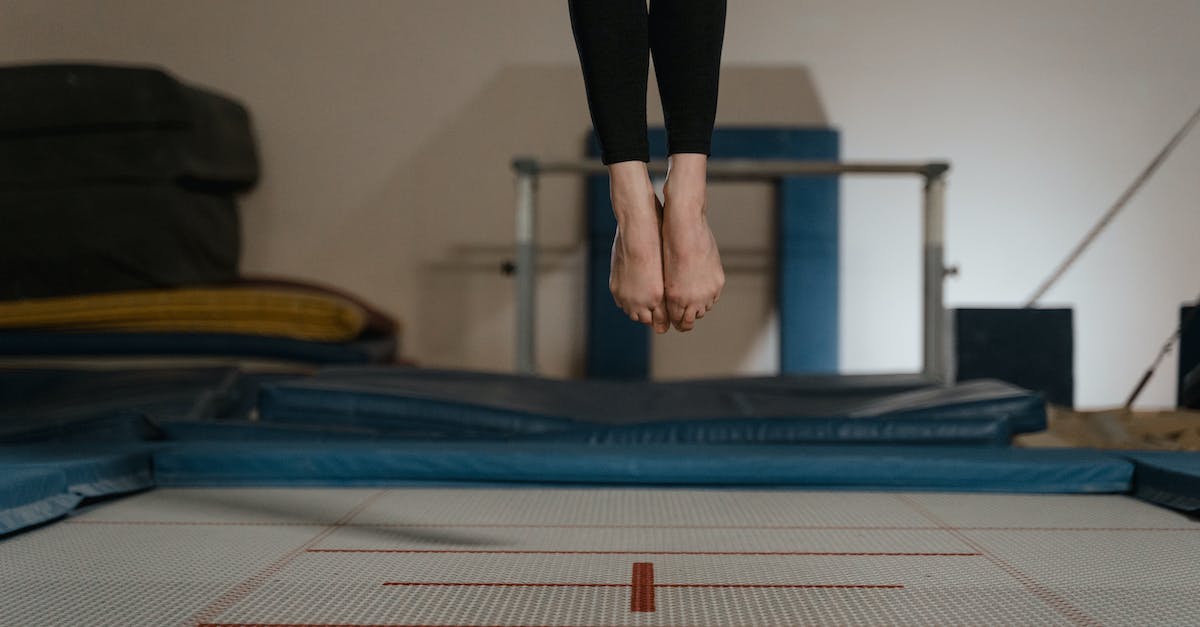The Ultimate Guide to Trampolining: A Comprehensive Trampoline Masterclass
Introduction
What is trampolining?
Trampolining is a thrilling and exhilarating activity that involves jumping and performing acrobatic movements on a trampoline. It is a popular recreational and competitive sport that provides a unique way to improve physical fitness and coordination. Trampolining offers a wide range of benefits, including increased cardiovascular endurance, strengthened muscles, improved balance, and enhanced spatial awareness. Whether you are a beginner or an advanced trampoliner, this comprehensive guide will provide you with all the information you need to become a trampoline master. From basic techniques and safety precautions to advanced tricks and routines, this guide covers it all. So, let’s dive into the exciting world of trampolining and discover the joy of bouncing and flipping through the air!
Benefits of trampolining
Trampolining offers a wide range of benefits for both children and adults. One of the main advantages is that it provides a fun and enjoyable way to stay active and fit. Jumping on a trampoline helps to improve cardiovascular health, strengthen muscles, and increase flexibility. It also helps to improve coordination, balance, and spatial awareness. Additionally, trampolining is a low-impact exercise that puts less stress on the joints compared to other forms of physical activity. Whether you’re looking to improve your overall fitness or simply have a good time, trampolining is a fantastic activity that offers numerous benefits for people of all ages and fitness levels.
History of trampolining
Trampolining, a thrilling and dynamic sport, has a rich history that dates back centuries. The origins of trampolining can be traced back to ancient civilizations, where people would use animal skins or crude materials to bounce on. However, it wasn’t until the 20th century that trampolining gained popularity as a recreational and competitive activity. In the early 1930s, American gymnast George Nissen and his coach Larry Griswold developed the modern trampoline, which featured a canvas bed and metal springs. This invention revolutionized the sport, allowing for higher and more controlled jumps. Since then, trampolining has evolved into a widely practiced sport, with various disciplines and competitions held worldwide. Today, trampolining continues to captivate individuals of all ages, offering a thrilling and gravity-defying experience.
Choosing the Right Trampoline

Types of trampolines
Trampolines come in various types, each offering a unique experience for trampoline enthusiasts. The most common type is the classic round trampoline, known for its simplicity and versatility. Rectangular trampolines, on the other hand, are preferred by professional athletes and gymnasts due to their superior bounce and larger jumping area. For those looking for a compact option, mini trampolines are perfect for indoor use and fitness workouts. Finally, there are water trampolines, which provide a fun and refreshing twist to traditional trampolining by allowing users to bounce on water. With such a wide range of trampoline types available, there’s something for everyone to enjoy!
Size and shape considerations
When it comes to trampolines, size and shape considerations play a crucial role in determining the overall experience. The size of the trampoline should be chosen based on the available space and the intended usage. A larger trampoline allows for more freedom of movement and can accommodate multiple users at once. On the other hand, a smaller trampoline is more suitable for limited spaces or younger users. Additionally, the shape of the trampoline can also impact the bounce and performance. Round trampolines provide a consistent bounce across the entire surface, while rectangular trampolines offer a higher bounce and are preferred by gymnasts and athletes. Ultimately, the size and shape of the trampoline should be carefully considered to ensure a safe and enjoyable trampolining experience.
Safety features to look for
When it comes to trampolining, safety should always be a top priority. To ensure a safe and enjoyable experience, it is important to look for certain safety features when purchasing a trampoline. One of the key features to consider is a sturdy frame made of high-quality materials that can withstand the weight and impact of multiple users. Additionally, a trampoline with a safety enclosure or netting can provide an extra layer of protection by preventing users from falling off the trampoline. It is also essential to check for padded springs and a thick, durable jumping mat to minimize the risk of injuries. By choosing a trampoline with these safety features, you can have peace of mind knowing that you and your loved ones can enjoy trampolining while minimizing the risk of accidents.
Setting Up Your Trampoline

Finding the perfect location
Finding the perfect location for your trampoline is crucial for a safe and enjoyable experience. When choosing a location, consider the space available in your yard or garden. Make sure there is enough room for the trampoline to be set up without any obstructions such as trees, fences, or overhead power lines. It is also important to select a flat and level surface to ensure stability and prevent any accidents. Additionally, consider the surrounding area and potential hazards like sharp objects or uneven terrain. By taking these factors into account, you can find the perfect location for your trampoline and create a fun and safe environment for everyone to enjoy.
Assembling the trampoline
Assembling the trampoline is an important step in ensuring a safe and enjoyable trampolining experience. Before starting, it is essential to carefully read the manufacturer’s instructions and gather all the necessary tools and components. Begin by laying out the trampoline frame and attaching the legs securely. Then, connect the springs or bungee cords to the frame and stretch them evenly across the trampoline surface. Make sure to double-check that all connections are secure and tightened properly. Finally, attach the trampoline mat and safety enclosure, following the manufacturer’s guidelines. Taking the time to assemble the trampoline correctly will provide a solid foundation for countless hours of bouncing fun.
Ensuring proper safety measures
Ensuring proper safety measures is crucial when it comes to trampolining. With the high-flying acrobatics and exhilarating jumps, it is important to prioritize the well-being of trampoline enthusiasts. One of the key safety measures is to always have a safety net or enclosure around the trampoline to prevent accidental falls. Additionally, proper supervision is essential, especially for younger jumpers, to ensure they are following the rules and guidelines. It is also important to regularly inspect the trampoline for any signs of wear and tear, and to maintain a safe jumping surface by keeping it free from debris. By taking these safety measures seriously, trampolining can be a fun and enjoyable activity for everyone involved.
Basic Trampoline Techniques

Bouncing and jumping
Bouncing and jumping are the fundamental skills in trampolining. These actions require proper technique and body control to achieve maximum height and perform various tricks and flips. When bouncing on a trampoline, it is important to maintain a balanced and centered position, using the legs and core muscles to generate upward momentum. Jumping, on the other hand, involves springing off the trampoline surface with precision and timing, allowing for impressive aerial maneuvers. Mastering the art of bouncing and jumping is essential for trampoline enthusiasts looking to take their skills to new heights.
Basic flips and tricks
In the world of trampolining, mastering basic flips and tricks is essential for any aspiring trampolinist. These moves not only add excitement and flair to your routine but also serve as building blocks for more advanced maneuvers. Whether it’s a simple front flip or a stylish backflip, learning and perfecting these basic flips and tricks will set you on the path to becoming a trampoline master. With practice and dedication, you’ll soon be impressing your friends and family with your acrobatic skills on the trampoline.
Proper landing techniques
Proper landing techniques are crucial for a safe and enjoyable trampolining experience. When landing on a trampoline, it is important to keep your body relaxed and your eyes focused on the center of the trampoline. Bend your knees slightly upon landing to absorb the impact and distribute the force evenly throughout your body. Avoid landing with your legs straight or locked, as this can lead to injuries. Additionally, try to land with both feet at the same time to maintain balance and stability. Practicing proper landing techniques will not only reduce the risk of accidents but also improve your overall trampolining skills.
Advanced Trampoline Skills

Front flips and backflips
Front flips and backflips are two of the most exciting and challenging moves in trampolining. These aerial tricks require a combination of skill, strength, and coordination. To perform a front flip, the trampolinist jumps high into the air, tucks their knees to their chest, and rotates forward. It takes practice and precision to execute a smooth and controlled front flip. On the other hand, backflips involve jumping backwards and rotating in the air. The trampolinist must generate enough height and momentum to complete the full rotation and land safely on the trampoline. Both front flips and backflips require proper technique, body control, and confidence. With dedication and training, trampolinists can master these impressive moves and add an extra level of excitement to their trampolining routine.
Twists and spins
Twists and spins are advanced trampoline techniques that can add excitement and flair to your jumps. These moves involve rotating your body in mid-air while maintaining control and balance. To perform twists, you can use your arms and core muscles to initiate the rotation, while spins require a combination of upper body and leg movements. Mastering these techniques requires practice and proper technique, but once you’ve got the hang of it, you’ll be able to impress your friends and take your trampolining skills to the next level.
Combining multiple tricks
Combining multiple tricks is the next level of trampolining mastery. Once you have mastered individual tricks, it’s time to take it up a notch and start combining them to create impressive sequences. This not only showcases your skill and creativity but also adds an element of excitement to your trampoline routine. By seamlessly transitioning from one trick to another, you can create a seamless flow that keeps the audience engaged and amazed. Whether it’s combining flips, twists, or spins, the possibilities are endless when it comes to combining multiple tricks on a trampoline. So, get ready to push your limits, experiment with different combinations, and take your trampolining skills to new heights!
Safety Tips and Precautions

Wearing protective gear
When it comes to trampolining, wearing protective gear is essential for ensuring safety and preventing injuries. The high-energy nature of bouncing on a trampoline can lead to accidents, so it is important to take necessary precautions. The most basic protective gear includes a helmet, knee pads, and elbow pads. These items provide cushioning and support to the head, knees, and elbows, reducing the risk of serious injuries in case of falls or collisions. Additionally, it is recommended to wear comfortable and well-fitted clothing that allows for easy movement and doesn’t restrict the range of motion. By wearing protective gear, trampoliners can enjoy their bouncing experience with peace of mind, knowing that they have taken steps to minimize the potential risks involved.
Supervision and rules
When it comes to trampolining, supervision and rules are essential for ensuring the safety of all participants. Trampolining can be a fun and exhilarating activity, but it also carries some risks. Therefore, it is important to have a responsible adult present to supervise and enforce the necessary rules. These rules may include guidelines on the number of people allowed on the trampoline at a time, restrictions on certain acrobatic moves, and reminders to always jump in the center of the trampoline. By adhering to these rules and having proper supervision, everyone can enjoy trampolining while minimizing the risk of accidents or injuries.
Avoiding risky maneuvers
When it comes to trampolining, safety should always be a top priority. Avoiding risky maneuvers is crucial to prevent accidents and injuries. One of the most important things to remember is to never attempt any tricks or flips that are beyond your skill level. It’s also essential to maintain proper body control and balance while jumping on the trampoline. Always land on both feet and avoid landing on your head or neck. Additionally, ensure that the trampoline is in good condition and free from any damages or hazards. By following these guidelines, you can enjoy trampolining while minimizing the risk of accidents.







